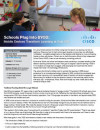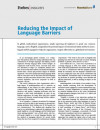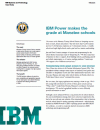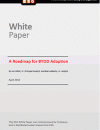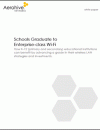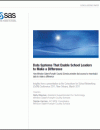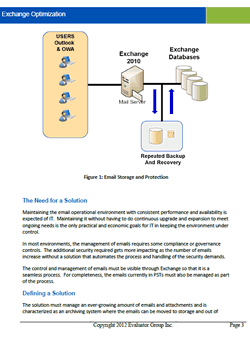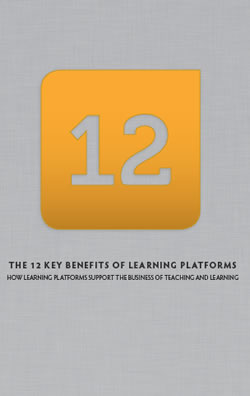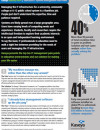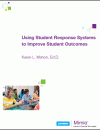|
||||||||||||||||||||||||||||||||||||||||||||||||||||||
The Dillard University Center for Teaching, Learning & Academic Technology Blog
Search DU CTLAT Blog
Tuesday, June 26, 2012
eSchool News White Papers_June 2012
American Association of University Professors - The AAUP Online
 The conference will take place at the Liaison Capitol Hill Hotel in Washington, DC, October 26–28, 2012. In addition to presentations, the AAUP conference will once again include a series of training workshops for current and future governance leaders that will be spread out over the three days of the conference. Submit a Proposal Proposals are sought from individuals or groups on topics relating to college and university governance. Proposals can be configured variously as twenty-minute individual presentations, paired or group presentations, or roundtable discussions on particular topics. Proposers are encouraged (but not required) to explore connections between their institutions and other institutions, and to consider the relevance of AAUP governance policies to problem-solving solutions. Possible areas of focus:
|
|
The
AAUP Online
is an electronic newsletter of the American Association of University
Professors. Learn more about the AAUP. Visit us on Facebook. Follow us on Twitter. |
|
|
American Association of University Professors - The AAUP Online
Monday, June 25, 2012
TCU eLearning: Mapping Tools
Mapping Tools
|
Where in the world are we? A handful of great digital mapping
resources have come to my attention lately. In addition to geography courses,
these websites would fit nicely in history, sociology, anthropology,
archaeology, foreign language, and even literature courses; maps are also a
wonderful addition to digital storytelling projects.
First, a few specific resources:
If the ancient world is your thing, ORBIS:
The Stanford Geospatial Network Model of the Roman World would
be a wonderful classroom addition. Like a travel site for ancient world, users
can select their departure point and destination, the time of year travel is to
take place, their method of travel, and their goal (speed or cost savings). The
site then maps a route. No better way to bring home how ideas, people, and commerce
might - and might not - spread. (Thanks to Chris Clark at Notre Dame's
Kaneb Center for tipping me off to this resource.)
There are two great interactive projects related to slavery in
the United States. First, National Geographic has a great
digital branching story about the Underground Railroad. In this
simulation, users make choices and receive feedback as they attempt to journey
from Maryland to Canada. Though plenty of historical images and rich
descriptions accompany each step, there are no useable map images.
The above site, however, would pair nicely with Visualizing Emancipation, a project from
the Digital Scholarship Lab at the University of Richmond (funded in part by a
grant from the National Endowment for the Humanities). Visualizing Emancipation
specifically focuses on the emancipation of slaves during the Civil War; data
was gathered from a detailed study of primary documents including runaway slave
notices, articles about returned slaves, troop locations, seasonal patterns,
and instances of African-Americans helping the Union. For another review, you
can consult the article in Chronicle of Higher
Education about the project.
And now some more general digital mapping resources:
The United Nations Cartographic
Section has a great list of regional political maps (all in an
easy to use and re-use PDF format), maps about current peacekeeping and
peacebuilding missions, and a small selection of institutional, historical, and
regional maps. If you'd like a map of the Okavango River basin, they've got it.
For more extensive geopolitical maps and facts,the CIA World Factbook
is a great resource; this site even supports country-to-country comparisons,
audio files of national anthems, and includes detailed information about each
country.
I'd be remiss not to direct to you one of the finest digital map
archives online, the Perry-Castañeda Library Map
Collection at the University of Texas. Like the UN site, they
have maps related to current events, but their collection also includes general
interest maps, historical maps, and fully digitized versions of several
historical atlases.
For a more interactive map experience, check out the University
of Oregon's Mapping History Project. Broken down by
region and time period, these maps allow you to move a slider along the bottom
of the map to illustrate the chronological progression of political, social,
economic, and intellectual events. Sadly, they seem to be missing a section on
Asia.
Last, to round out this survey of mapping resources, here's a
great little animation reviewing how
astronomers learned to measure celestial distances.
TCU eLearning: Mapping Tools
Tomorrow's Professor: University Governance and Common Pool Resources
http://derekbruff.org/blogs/tomprof/2012/06/25/tp-msg-1189-university-governance-and-common-pool-resources/
University Governance and Common Pool Resources
Aligning faculty incentives to desired institutional
outcomes is a challenge to university governance. One reason for this
difficulty is that academic departments jointly produce and use common pool
resources (CPRs). Faculty members share the costs and benefits of building and
maintaining the quality of a department. Because a department?s benefits and
costs are shared, there is a tendency for some faculty to minimize the time and
effort devoted to improving the common pool while claiming a large a share of
the pool for themselves. They may seek to freeload on the efforts of others.
Department chairs will gain insights into governance by considering the
resemblance between university departments and CPRs.
Most analyses of CPR management focus on solving the
classic ?tragedy of the commons.? In this exemplification, herders share
grazing land. They all have incentives to overgraze the shared land because the
individual herder will not bear the full cost of feeding his or her herd; the
cost will be largely born by other grazers whose cattle will have less grass.
The common grazing land will be overused. Recognizing that analogous situations
are present in academic departments will help explain why some practices exist
and also help guide departmental governance.
An Academic Department as a CPR System
The shared resources in an academic department are
difficult to identify because they are more abstract than natural resources.
Consider the CPR nature of a department: Quality students, a vibrant
intellectual environment, a support budget, and a good reputation are among the
resources that faculty members share. Each individual benefits from a quality
department that is jointly built. For instance, a good crop of students
represents a jointly produced resource and provides joint benefits.
No single faculty member can claim total responsibility.
Cohorts of good students help ensure that faculty members will be able to teach
their specialty courses or perhaps have opportunities to teach in the summer or
intercessions. Certainly, teaching can be more fun with a classroom of students
willing and able to grasp and advance traditional course content. Better
prepared students make better student workers. Similarly, a lively intellectual
environment contributes to the research goals of individual faculty members and
enables fruitful discussions on academic topics. A department?s reputation
helps generate consulting opportunities for individual members and even
contributes to promotions and external job searches. The list could go on.
Within a department, faculty contribute to the web of jointly produced CPRs.
An incentive problem can arise when some faculty members
attempt to use the CPRs while minimizing their efforts to produce those same
resources. Faculty who extract resources from the common pool may believe they
can maintain those benefits without extending their own efforts. Lags between
the production of departmental resources and their visible dissipation
reinforce the idea that lower effort may not reduce the CPRs. Accordingly,
there are incentives for individuals to contribute little or nothing to their
department?s CPRs while sharing in the benefits of ample students, intellectual
energy, good reputation, and so forth. The caricature of the faculty member
ignoring important duties to pursue a hobby having nothing to do with the job
is well known and may be rational behavior.
Principles for Governing an Academic CPR System
Traditionally, only two solutions to inefficiencies
created by CPR were considered: (1) reward individuals for the full costs and
benefits of their actions (privatization), or (2) give government authority to
set the rules. In a university setting both approaches imply micromanagement in
the form of either developing very specific performance criteria and
compensating faculty members according to their performance under those rules,
or administratively dictating work duties. Both approaches are often associated
with the corporate governance model. When applied to a department, these
approaches are likely to be inefficient because faculty jobs are neither
standardized nor routine. Attempts to make them so risk resulting in ?work to
the rule? behavior, uncovered tasks, and missed opportunities.
Elinor Ostrom received the 2009 Noble Prize in economics
for her analysis of successful CPR governance systems that were biologically
based (such as fisheries and irrigation systems). She concluded that
institutions can successfully govern CPR systems without either detailing a
reward structure or centralized task assignments. She identified eight design
principles that characterize successful CPR systems. To the extent that
academic departments have CPR characteristics, Ostrom?s design principles
may be recognized in departmental policies and provide
guidance for departmental administration. A caveat, however, is that the design
principles cannot be implemented in a mechanical manner. They should be
customized to fit the characteristics of individual departments.
1. Defined beneficiary of success.
In academic contexts, this principle implies that
individuals who benefit from the accomplishments of a strong department must be
limited. The restrictions prevent other claimants in the university from
totally dissipating the rewards earned by another department?s efforts. This
design principle does not negate the possibility that some benefits from one
department spill over to other units, but it ensures that a certain portion
remains with the department. Clear boundaries are necessary to make certain
that departments can be effective units from which to launch the efforts
needed.
2. Convergence between rules and environmental conditions
is necessary.
In the case of academic departments, this principle
implies that governance rules should conform to the characteristics of the
discipline and the university. For instance, the rules governing student
performance, external service, or publications should differ among departments
because they function in different environments.
3. Individuals affected by the rules should have a voice
in modifying the rules.
This principle is satisfied in most departments, although
the degree of ?voice? does vary between strong and weak chair systems. Within
university contexts this principle is important because of the variety of
specialized tasks that faculty perform. When departmental standards are
modified, faculty members probably know the consequences as well as or better
than higher level administrators.
4. Contributions necessary to develop and use common
resources should be monitored by individuals who developed and use the CPRs.
This rule puts the responsibility for monitoring
activities closest to the individuals who have knowledge of those who are
shirking activity and the incentive to avoid it. For instance, faculty members
are likely to know the value of their colleagues? scholarship, teaching, and
service better than anyone else. The principle is manifest in peer review
evaluation processes.
5. Sanctions for inadequate performance should be
graduated.
Suppose a faculty member is cutting office hours in order
to consult?a relatively minor infraction at most universities. If no sanction
occurred, the violator may decide that no one?s behavior is monitored and so
others are freeriding. Thus, he or she will too. Graduated sanctions may
curtail the nonconforming behavior, inform violators that others who disregard
the rule will also be sanctioned, and increase the expected costs of future
violations. An initial sanction might be as small as
?I noticed you missed office hours. Is anything wrong??
6. Conflict resolution mechanisms should be available.
Good administrators know there are at least two sides to
every story. Yet some management models implicitly assume the existence
of an omnipotent judge. Faculty members violate rules for
a variety of reasons including willful, honest mistakes, or the vagaries of
circumstance. Lacking a conflict resolution mechanism, all violations would be
treated the same.
7. Individuals producing CPRs should have the ability to
devise their own ways of achieving ends.
This principle implies that departments should have a
degree of rule-setting authority and the chair should support individual
faculty members? decisions of authority. If a central administration assumed
that only they have rule-setting authority, it is likely the department members
will refrain from introducing new, more efficient ways of doing things.
8. Governance systems are organized in nested enterprises
and each organization must conform to larger systems.
This design principle clearly applies to biological
systems where interdependence is the touchstone of ecological perspective.
Departments are nested within colleges, which are in turn nested within
universities, which are nested in statewide systems. Establishing rules at one
level that are inconsistent with rules at another level will create
inefficiencies or a systems breakdown. For instance, if a department has a
travel policy that differs from the university?s, faculty could build plans
around a conference, only to find that their plans will not be funded.
Conclusion
Ostrom?s design principles reflect features common to
many long-lasting CPR governance systems. Like other CPR systems, academic
departments rely on resources that are jointly produced and shared; thus,
departments must address efficiency problems common to other organizations that
use CPRs. The recognition of the CPR nature of academic departments helps
explain the reasons many departments are governed as they are. Chairs can also
use the design principles to create and modify concrete rules and processes
tailored to their unique and changing contexts.
------------------------------------
Emily A. Wickelgren is associate professor and vice chair
of psychology at Sacramento State University. Nathaniel J. Blair is lecturer in
psychology at Sacramento State University. John P. Blair is professor of
economics at Wright State University.
References
Ostrom, E. (1990). Governing the commons: The evolution
of institutions for collective action. New York, NY: Cambridge University
Press. Tomorrow's Professor: University Governance and Common Pool Resources
13 Websites That Offer Free eBooks for Teachers

1. Bartleby
Bartleby publishes digital versions of thousands of free classics including literature and nonfiction.
2. E-Books Directory
E-Books Directory is home to around 1,700 free electronic textbooks, documents and lecture notes.
3. eBooks@Adelaide
The University of Adelaide in Australia offers a very user-friendly eBook search experience. You can browse the books it offers by author, title or by using the Google-powered search function.
4. Flat World Knowledge
Flat World Knowledge is the world's largest publisher of free college textbooks.
5. Free eBook-s
A free eBook search engine that allows you to search the internet for already-known eBook listings.
6. Google Books
With Google Books, you can search (shocking, I know) and preview millions of books from libraries and publishers around the world.
7. Many Books
Many Books is an index of over 29,000 free works that can be searched by author or title.
8. NeoTake
NeoTake is neat for a couple of reasons. First, this website has indexed over 5.4 million eBooks and ePrints (not all of which are free). Second, it allows you to read reviews so that you can select the best version for your class.
9. Open Culture
Open Culture provides links to 300 free eBooks including Don Quixote, Heart of Darkness, The Red Badge of Courage, Les Miserables, Animal Farm, MacBeth and The War of the Worlds.
10. Open Library
The headline on the Open Library website is, “The World's classic literature at your fingertips. Over 1,000,000 free eBook titles available.” ‘Nuff said?
11. Planet eBook
All of the electronic novels and books that are available on Planet eBook are free for you to download and share with your students and colleagues.
12. Project Gutenburg
Project Gutenberg offers 39,000 free eBooks. Some of the top downloads are The Adventures of Sherlock Holmes, Pride and Prejudice, Adventures of Huckleberry Finn, Frankenstein, Dracula and Jane Eyre.
13. Science Books Online
I’m guessing that you already have an idea of the kind of eBooks that Science Books Online offers, but in case you’re not feeling very imaginative today, this website lists free science eBooks, textbooks, lecture notes, monographs and other science-related documents.
13 Websites That Offer Free eBooks for Teachers
Thursday, June 21, 2012
Dillard Today - A Monthly E-Newsletter From Dillard University - June 2012
|
|||||||||||||||||||||||
|
Dillard University | 2601
Gentilly Boulevard | New Orleans | LA | 70122
|
Dillard Today - A Monthly E-Newsletter From Dillard University - June 2012
Subscribe to:
Posts (Atom)

